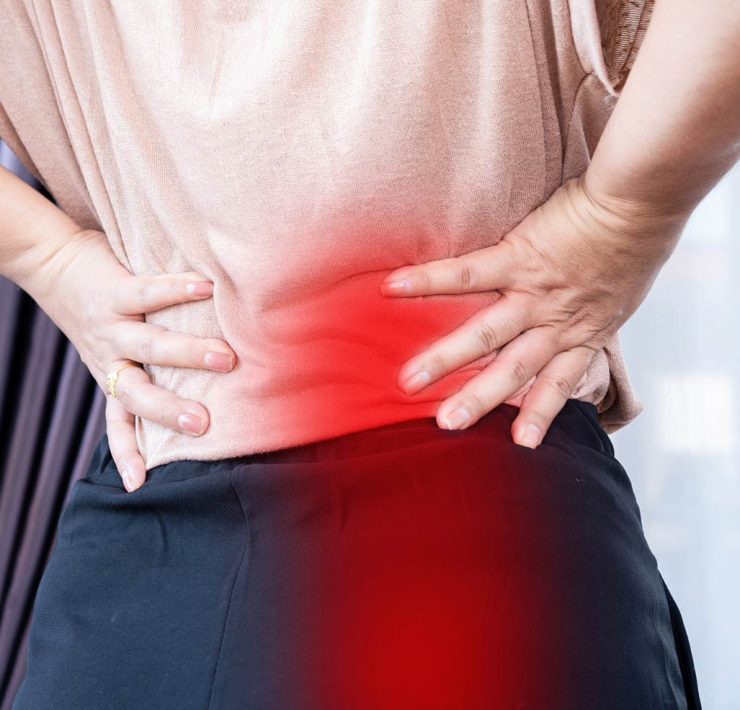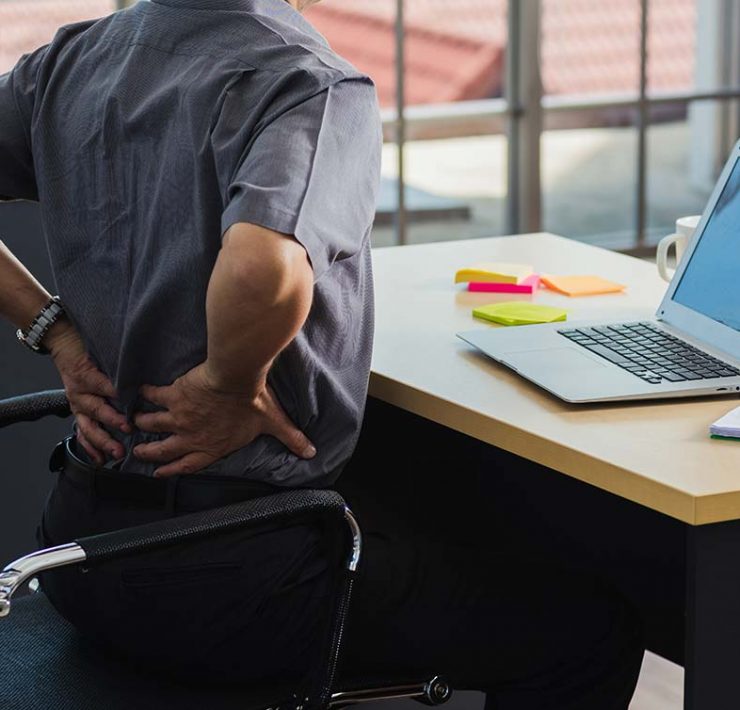As a child, how often did you hear the adults around you say, “I threw out my back!”?
Years later, you may have had a few personal experiences with the phrase, too. But what does it mean to “throw out” your back? And is there a way to fix it?
Let’s talk about what’s really going on when you feel you’ve thrown out your back and which treatments may help.
What Does It Mean to “Throw Out” Your Back?
The figure of speech generally refers to sudden, intense pain in the back. Many people use the phrase having experienced back pain after either a fall or injury or after performing otherwise mundane tasks such as gardening, lifting, or shoveling snow.
If you’ve “thrown out your back,” you may feel back stiffness that limits your range of motion or experience intense pain accompanied by spasms or cramps. The pain can be temporary, lasting only a couple of hours or days, or turn into a chronic issue requiring medical attention. Depending on the intensity of pain, you may have to modify your movement or cut back on regular activities until the symptoms resolve.
Underneath the surface, “throwing out your back” indicates you’ve experienced one or more of the following ailments:
Muscle or tendon strain
Back sprains and strains are the most common cause of back pain, according to the Cleveland Clinic. You may strain your back by lifting something too heavy. Or, you can strain your back with normal, sudden bodily functions like coughing or sneezing. With a back strain, your muscles or tendons are usually the affected areas causing pain.
Think of your tendons like a rubber band. They’re tough, fibrous bands of tissue that connect your bones and muscles. When you strain your back, the “rubber bands” are twisted, torn, or pulled apart too far. This causes the pain we associate with a common back strain.
Ligament sprain
When you sprain your back, one or more ligaments in your back have overstretched or torn.
Ligaments connect bones to the joint, stabilizing the joint and preventing excess movement. Back sprains usually occur with a sudden fall or twisting movement that jars the joint—and its connecting ligaments—out of normal position. Twisting motions like swinging a golf club, shoveling dirt, or swinging a bat all commonly lead to a back sprain.
Disc injury
In between your spinal bones lie disks that provide cushioning for movement. With general wear and tear, or with a sudden back injury, you can experience problems like a herniated disc.
Closely related to a bulging, ruptured, or slipped disk, herniated disc means the “cushioning” in between your spinal bones moves or protrudes outwards. It may press on nearby nerves and cause sudden, excruciating pain in your back or limbs. Although common, herniated discs can be painful. In most cases, they resolve with proper rest and treatment, but occasionally they require surgery.
Fracture
Back fractures are less common with basic movement, and they usually result from a fall, crash, or other trauma. But they can happen, especially if you have an underlying issue such as arthritis or osteoporosis, which weakens your bones.
Back fractures generally refer to compression fractures of the spine, which are tiny cracks in your vertebrae. They tend to occur more as you age but can happen to anyone under the right circumstances. Back fractures require diagnosis and guidance from a healthcare provider or specialist. This person can oversee treatment and help you prevent further damage to the spine or surrounding nerves.
Ways to Manage Back Pain
So you think you’ve thrown out your back? Here’s what to do.
First, if your back pain is excruciating enough that you can’t move, lose control of bodily functions, or experience pain for more than 24 hours, then seek medical attention immediately.
If you don’t feel your back pain requires medical care right away, there are ways to care for a “thrown out” back. Try one or more of the following methods to treat your back pain:
Massage for back pain
Research shows massage is a reliable, natural treatment for acute low back pain.
Long-term, frequent massage maintenance is best for back pain. But if you’re in a pinch and just now getting started, it’s not too late. Massage therapy for back pain will help to improve circulation in the injured areas. As increased blood flows to the damaged muscle, ligament, or tendon, your body will continue to heal and your pain will gradually decrease.
Massage will also help to address inflammation. In fact, just 10 minutes of massage has been shown to reduce inflammation in muscles. Research shows that during a massage, muscles sense they’re being stretched, which triggers a reduction in your cells’ inflammatory response. And as inflammation decreases, so will the pain in your body.
Experts recommend structural massage—also called trigger point massage—and Swedish massage to address common back ailments, which have been shown to provide up to 6 months of relief from back pain. If your back pain originated from an injury, a sports massage may be appropriate for you. Although these types of massage have been proven to be especially beneficial for back pain, your massage therapist will be able to assess your injury to determine the best massage treatment for your body.
Anti-inflammatories
You may find your back pain is manageable with over-the-counter anti-inflammatory medication such as acetaminophen or a type of nonsteroidal anti-inflammatory drug (NSAIDs). Be sure to take any over-the-counter medication only as directed and avoid long-term use without the guidance of your doctor.
Your provider may also recommend a muscle relaxer or another form of medication to relax muscles and prevent back spasms.
Stretching
Stretching is a great way to gently ease sore muscles into recovery. It promotes healthy blood flow, as well as other benefits, including reduced stress and better posture (a known culprit in chronic pain!). However, it’s important to be gentle and discuss any type of injury with a doctor before you incorporate stretching into your daily routine.
You can start by looking into gentle stretching movements or incorporating yoga movements like child’s pose. If you need guidance, see if there are assisted stretching services in your area or seek physical therapy.
Ice or heat therapy
If your back is sore, apply ice to the affected area for the first 24 to 48 hours. It’s likely your pain is due to inflammation, and ice will help get the swelling down. Once your pain starts to decrease, you can begin to incorporate soothing heat from a warm bath or a hot compress placed on the area. This will help to relax and loosen up tight muscles, which decreases pain.
How to Prevent Back Pain
So you’ve thrown your back out and want to know how to avoid doing it again? Prevention is often easier than cure. Try these tips to keep your body strong, loose, and less prone to injury.
- Have ongoing maintenance massages.
- Stay active to keep muscles strong and avoid injury.
- Maintain a healthy weight to ease the load on bones, muscles, and joints.
- Don’t forget to warm up. Warm, loose muscles are less prone to injury than cold, stiff ones.
- Wear the right footwear. Avoid heels, platforms, or uncomfortable shows.
- Learn how to move properly. This includes how to stand, sit, lift, bend, and squat in ways safest for your body.
Prevent and treat back pain with an in-home massage.
Looking for ways to soothe (and ward off) back pain from the comfort and privacy of home? Zeel has you covered, 365 days a year. Book in seconds online or through our app (iOS and Android), and you’ll be connected with a licensed, vetted, expert practitioners who specializes in the techniques you need to address pain, whether via a super-targeted sports massage, a get-in-there-and-fix-it deep tissue massage, or a perfectly soothing Swedish to get your back out of pain.
Brittany Dick is a Writer and Editor who specializes in health, wellness, and nutrition content. She enjoys partnering with clients whose missions are to improve the health and wellbeing of their communities and connecting with subject matter experts to tell the stories of their brand.







